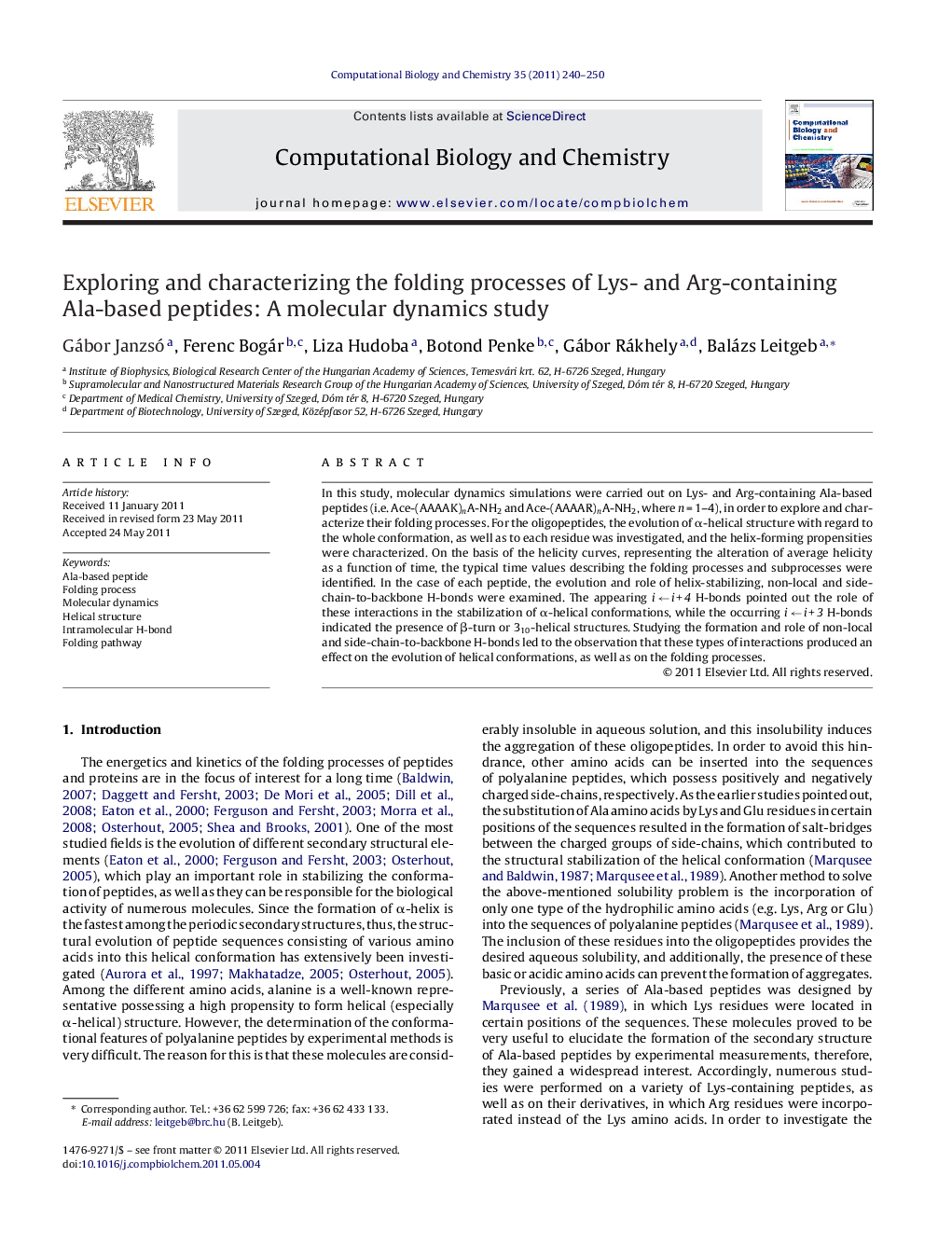| Article ID | Journal | Published Year | Pages | File Type |
|---|---|---|---|---|
| 15226 | Computational Biology and Chemistry | 2011 | 11 Pages |
In this study, molecular dynamics simulations were carried out on Lys- and Arg-containing Ala-based peptides (i.e. Ace-(AAAAK)nA-NH2 and Ace-(AAAAR)nA-NH2, where n = 1–4), in order to explore and characterize their folding processes. For the oligopeptides, the evolution of α-helical structure with regard to the whole conformation, as well as to each residue was investigated, and the helix-forming propensities were characterized. On the basis of the helicity curves, representing the alteration of average helicity as a function of time, the typical time values describing the folding processes and subprocesses were identified. In the case of each peptide, the evolution and role of helix-stabilizing, non-local and side-chain-to-backbone H-bonds were examined. The appearing i ← i + 4 H-bonds pointed out the role of these interactions in the stabilization of α-helical conformations, while the occurring i ← i + 3 H-bonds indicated the presence of β-turn or 310-helical structures. Studying the formation and role of non-local and side-chain-to-backbone H-bonds led to the observation that these types of interactions produced an effect on the evolution of helical conformations, as well as on the folding processes.
Graphical abstractFigure optionsDownload full-size imageDownload as PowerPoint slideHighlights► Ala-based oligopeptides possess a propensity to adopt α-helical conformation. ► The peptides are characterized by different helicities depending on their lengths. ► The peptides show various helicities depending on the type of basic amino acid. ► Non-local H-bonds are helix-destabilizing interactions. ► Non-local H-bonds affect evolution of helical conformation and folding processes.
